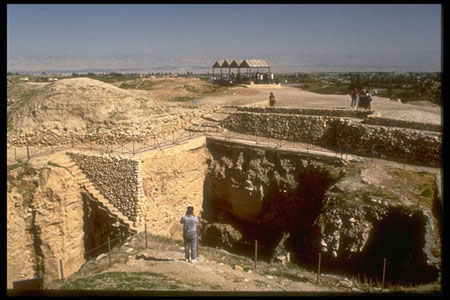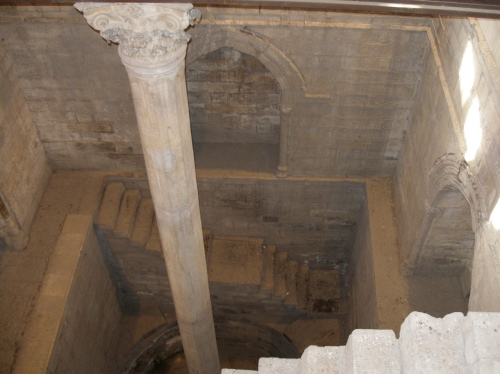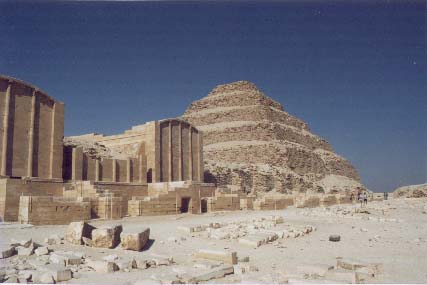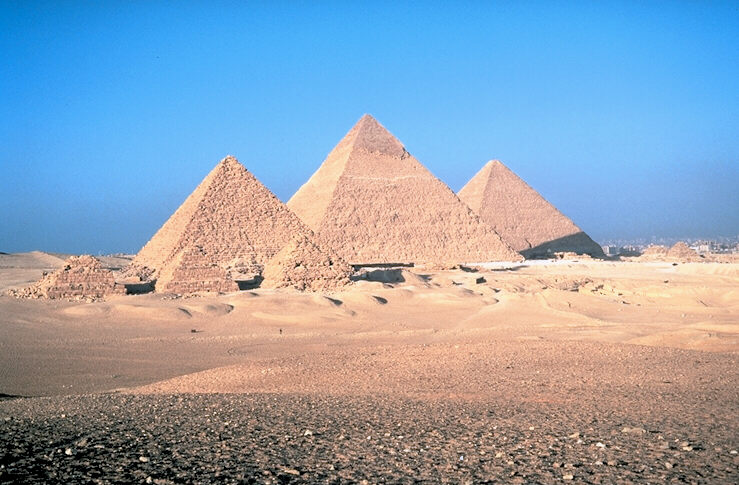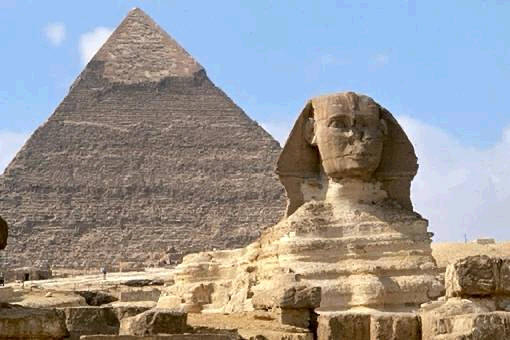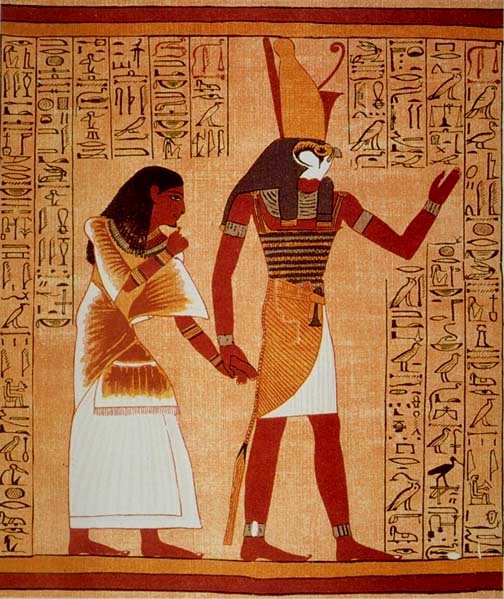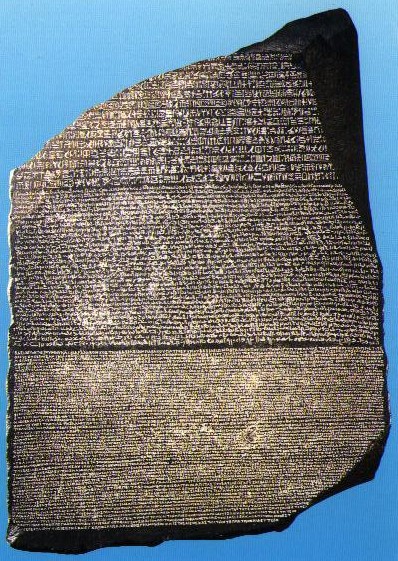SUMERIA SETTLES. After a long time of nomadic wandering in small bands, some human groups found a reason to put down roots and stay. Why do civilizations arise near rivers? The first civilizations were both riverine: Egypt along the Nile, and Sumer in Mesopotamia, where the Tigris and Euphrates rivers meet the Persian Gulf. In both cases, good farmland was created when people came together to irrigate the rivers into the fields, where silt was deposited, helping crops grow. It was also necessary for flood control. This complex pattern of organization, and division of labor that came into being, did so because of cooperation. Individuals had to work together to get a big job like ditch, canal, dike and aquifer digging done. By 3500 B.C., a constellation of city-states were forming in Sumeria (Biblical 'Shinar'), while Egypt had many prosperous villages. Around 2800, a major disaster struck: a flood of epic proportions occurred, leaving a large layer of silt for archeologists to marvel at. This flood may have inspired the Enuma Elish (the later Babylonian creation story), which contained a story of a 'great flood,' also present in the Old Testament of the Bible. Neglected or overwhelmed levees allowed a huge torrent of water to inflict massive destruction and death, re-emphasizing the need for the people left over to cooperate together. In the Epic of Gilgamesh, an ark saved people from the flood, which is also the story of Noah.
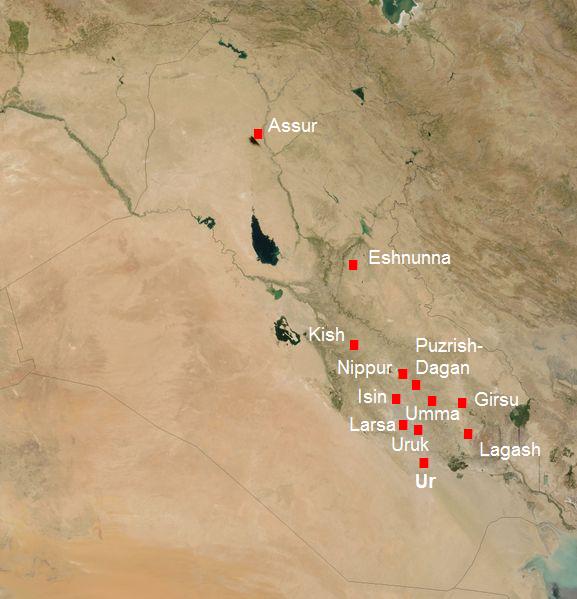
TECHNOLOGY. Rude boats were used to travel along the rivers, and around 5000 wind power was used by the hoisting of primitive sails. As well, a great discovery was made, like that of fire, by accident. Some rocks were not broken when hit with a hammer but instead, they just distorted their shape. They were malleable. Metals were discovered. These free metals were and are rare, so they were used as oranaments and jewelry. They were prized automatically and had intrinsic 'value.' Soon, mixing metals to make the resulting metal even harder, was found... alloys were discovered. One alloy was made from copper and tin: bronze. Bronze was hard as rock, but could still be beaten back into shape if deformed or dulled. Bronze was rare and did not supplant stone. This was still the stone age, but progress was made. The Sumerians invented the wheel, and used it to haul mud-bricks to the worksite, and when they turned it sideways, they got the potter's wheel to work with their clay.
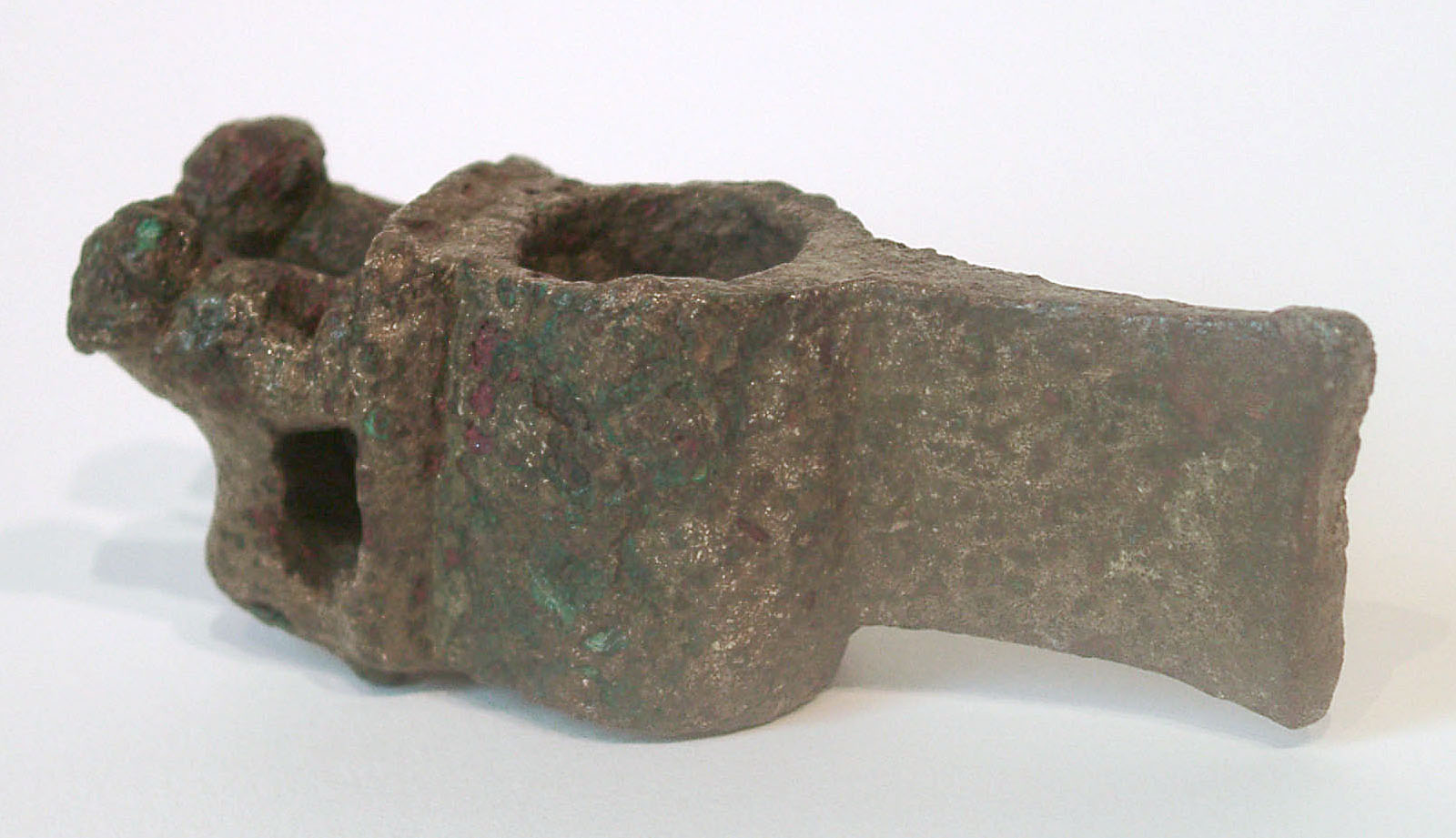
CITY-STATES. We have an enormous nation from sea to shining sea, but that is not the only political way to live. Sumerian city-states were totally independent, yet were rather similar to each other. Civilization is based on cities, even the word comes from 'civis', city. Each had a central temple where offerings could be made to the many city gods. Each shared common culture and language. Walls were built around each of the 12 cities. Outside the walls were farms, tied together by canals. Imagine each PHCC campus as a city-state, New Port Richey, Spring Hill, Dade City and Brooksville. Each are competitive yet trade rather peacefully with each other. People in each city had a special kinship, going through floods, storms and droughts together. Major Sumerian city-states: Ur, Lagash, Uruk, Kish, Eridu, Nippur. One great king of Uruk was Gilgamesh, who built a 6 mile wall around the city, and did many great works. He would later be the subject of many stories, and his story was enshrined in legend as the Epic of Gilgamesh.
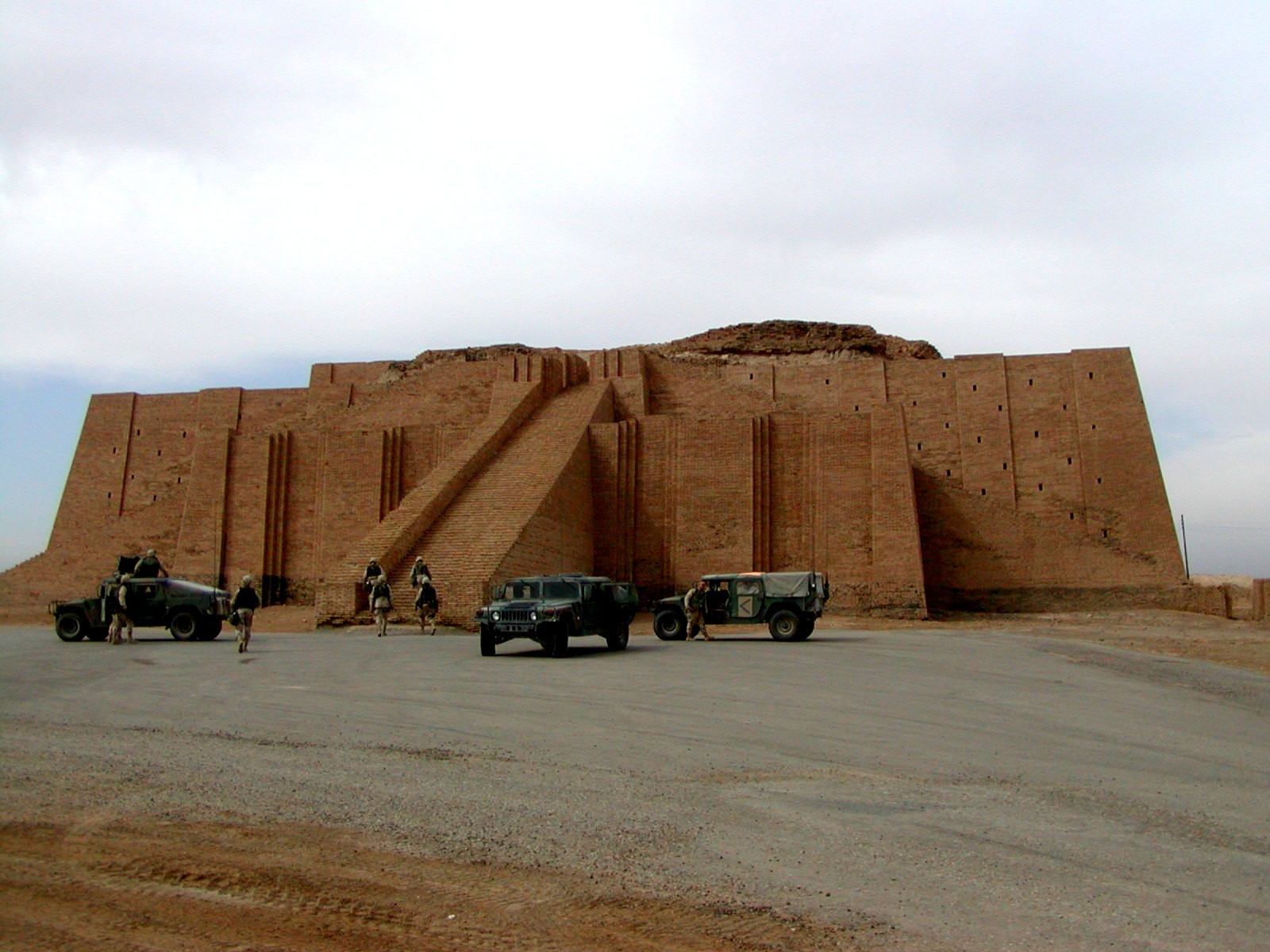
SOCIETY. The grand triumph of Sumer was its food supply. Creativity played a part: the farming plow and the wheel were invented. Fermentation of grapes and soaked barley was found to produce wine and beer, which were more healthy to drink than water- the alcohol killed microorganisms. There was enough food so that some people could make crafts, learn trades and sell goods. These people formed a middle class, and the upper class was made up of priests-kings and their temple assistants, who were magical people who were in-touch with the spirits in nature (in trees, rivers, thunder, etc.) and could negociate with the city gods. The whole idea of 'kingship' came from the gods. These priest-kings also organized city affairs and trade. Major gods: Anu (primeval sea), Enlil (air), Enki (sweet water, wisdom), Ki (earth [Gaia]- as separate from Anu [Ouranos]), Utu (sun), Nanna (moon), Inanna (love-Ishtar). Large temples called ziggurats were built in the center of each city, for the patron deity of that city. The gods were attributed with the arbitrariness of the natural world. Instead of floods being caused by the melting of snow in the mountains a thousand miles north in Anatolia, the gods inflicted punishment on the Sumerians using floods. Because the gods were arbitrary and their behavior was without a pattern, flat-out worship and sacrafice was made- not to their ethical judgement, but to their raw power. In fact, when Sumerians asked the great question "Why are we here?" The answer given was, "To serve the gods." No ethical foundation, a simple power relationship. The gods were not just anyway.
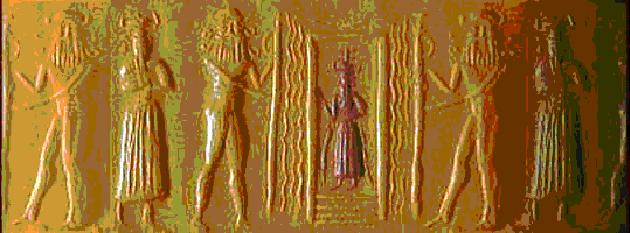
CUNEIFORM. Sumerians invented writing, in a script called cuneiform, in which wedge shaped marks were applied to a wet clay tablet. The first writing was pragmatic: for trade and accounting. How much grain did guy A produce and how much mr. B? Records were kept of who owed what to whom, including to the state, and what deals were being made. At first pictures were drawn, but they became stylized and began looking more like symbols representing things and ideas. As for numbers, they went I, II, III, IIII, IIIII, IIIII I, IIIII II, etc. The magic numbers were 12, 60 and 360. The hours and minutes were devised too, 24 hours in the day/night is rather arbitrary- why not 48 hours with 30 minutes in each hour? Because the magic number is 12, so 12 hours of light and 12 of dark = 24. Also, 12 = a dozen. We still use the 24 hour day today, of course, and eggs still come in a dozen. And a circle? Think of geometry: the circle is made of 360 degrees circumference. That's enough to make you do a 180 and look back at the contributions of the Sumerians. Sumerian (and later Roman) numerals, I, II, III and so on, are literal, while our 1, 2, 3 are symbolic. Some jobs that were indicated were: canal digger, merchant, crop harvester, boat tower, brewer. Writing was a way to freeze speech- what was said and done in a single place and time. Stories could be written down now, and soon the Epic of Gilgamesh was.
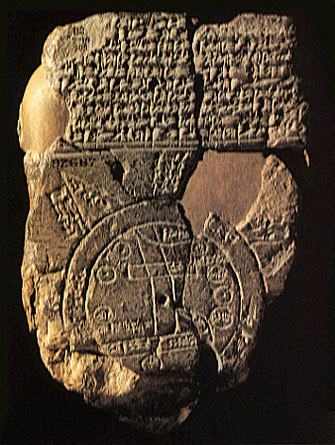
LEGACY. Where they came from, we do not know. Their language was not related to any other. The art and statues of Sumerians do not conform to our ideals of beauty and grandur, but these squat and round men and women occupy a special niche in our history. The Sumerians still live today when we count the minutes (they divided an hour into 60 min.), and the hours (they made 12 hours equal one half day, and 24 a full day), write a document, quote the law or ride on wheels. History and literature began there, and civilization radiated from there outward and onward through time. By these origins, mankind rose above that which is profane, and took civilizing steps.
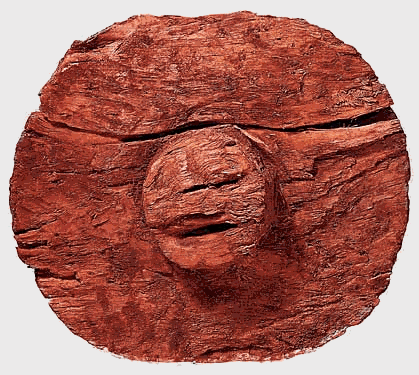
OTHERS. Besides nomadic pastoralist tribes wandering slowly around the ancient world, there were some other settled places. Jericho and Catal Huyuk made a living as trading centers, and the Canaanites around Jericho made aliving as traders, doing what traders do: skim off the top.
